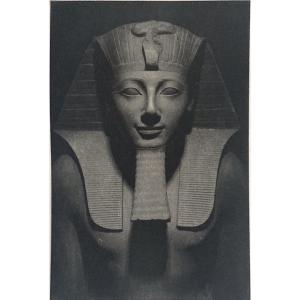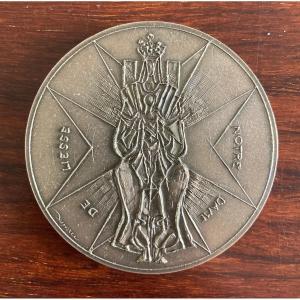Bather Seen from Behind, 1895
Etching numbered 32/50
Monogram stamp (Lugt 613e)
Annotations in the margins
8.7 x 7.3 cm
Provenance: Claude Bonin-Pissarro
Considered the "father of the Impressionists," Camille Pissarro was a hard worker who constantly questioned himself. Paul Cézanne, one of his friends, stated: "Perhaps we all come from Pissarro (...). He was the first Impressionist." Pissarro began engraving in the early 1860s, mainly under the influence of a movement of painter-engravers nicknamed "the etching revival." Along with Degas, he was the Impressionist who took the most serious interest in printmaking: both men introduced intaglio into their practice very early on. Their encounter resulted in a collection of prints whose experimental character is a landmark in the history of art.
Without knowing it, Degas and Pissarro created with the "original" print an art object suitable for all fortunes. After 1890, having rallied to anarchist ideas in the social struggle, Camille Pissarro sought to combine his practice as an engraver with his convictions. According to Michel Melot, he "found in printmaking the medium that could offer the unique to all and the best for all." Unlike painting, printing preserves the memory of "states" destined to disappear. For Pissarro, each "state" is considered a completed work.
For Christophe Duvivier, "Pissarro innovates knowing that he will not be understood by print dealers or collectors." He speaks of "art sensation" or even "engraved impressions." Through engraving, Pissarro continues his research in various techniques. Thus, engraving reveals itself for the Impressionist painter as an experimental laboratory that contributes to his evolution during the last twenty-five years of his career. Pissarro, as Jean Leymarie notes, is with Degas "the most engraver of the Impressionists and the most impressionist of engravers."
Finally, according to Charles Kunstler, "Camille Pissarro left a large number of plates - nearly 200 - most of which are admirable for their transparency, their acute observation of nature, and the richness and originality of their technique. Almost unknown during his lifetime, Pissarro's engraved work was revealed to the general public in 1923, twenty years after the master's death, when the catalogue of his prints appeared. A century later, the gallery has the honor of bringing this exceptional body of work back to light, which places its author among the greatest engravers in the history of art.
































 Le Magazine de PROANTIC
Le Magazine de PROANTIC TRÉSORS Magazine
TRÉSORS Magazine Rivista Artiquariato
Rivista Artiquariato